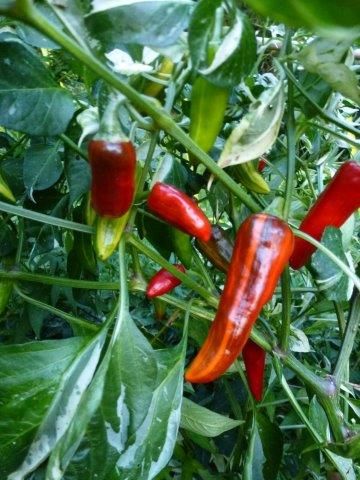
Today, September 22, we celebrate the autumnal equinox in the Northern Hemisphere. On this first day of fall, the sun is directly above the equator and the hours of day and night are nearly equal. In the Southern Hemisphere, today marks the vernal equinox, the first day of spring. Today we have about 12 hours of daylight and 12 hours of night. Back in June on the summer solstice, we had the shortest night and longest day (over 15 hours of light) and now the days are getting shorter and the nights are getting longer.
Earlier this month we had the full harvest moon, which can occur in September or October, depending upon whichever full moon is closest to the autumn equinox. According to the Old Farmer’s Almanac 2014, the moon rises about 50 minutes later every day in the mid- to-northern latitudes. However, at the beginning of fall, it rises just 30 minutes later-allowing farmers and gardeners just a little more time to harvest their crops in between the sun setting and the moon rising. I love tidbits of information like this, and the almanac is full of them from moon and tides to sunset and sunrise, day length and what to observe in the sky at night.
Another interesting piece which I read about is “Why We Have Seasons” which refreshed my knowledge of astronomy–is about how the tilt of the Earth as it revolves around the Sun affects the amount of sunlight, which gives us our seasons. In our Northern Hemisphere, when the North Pole is tilted away from the sun, we have the winter solstice and winter and when the North Pole is tilted toward the Sun, we experience the summer solstice and summer. When the hemispheres face the sun equally, we have the spring and summer equinoxes. Of course, this is just the opposite in the Southern Hemisphere.
These seasonal rhythm changes happen every year as our planet Earth orbits the Sun. And so, welcome fall! The summer heat has already dissipated and the weather has become much cooler-autumn is in the air. And with the cooler temps, the garden has slowed considerably-many plants have flowered and set seed-and some have even turned brown and withered. It is time to store what is left of the garden bounty. I am busy drying chile peppers, /item/6734/red-hot-how-to-harvest-dry-and-store-mature-red-chiles, as well as fermenting them; drying herbs /item/3759/video-how-to-dry-herbs; and drying and saving seed for next year’s garden.
And then there are the chores… clearing off the garden, cleaning up and removing dead plants… and sowing fall crops. Over the years, we have found that floating row cover extends our growing season for cool weather crops into the late fall, we just cleared a 50-foot row, added manure and amendments, roto-tilled and are ready to put in fall greens and veggie transplants. This week we received a big box from Agfabric which contains floating row cover and long rods to make a low grow tunnel. I will report on the progress of this project once we figure out how to assemble it and put it up. Meanwhile, happy autumn!






















Comments
Log in or create an account to post a comment.
Sign up Log in